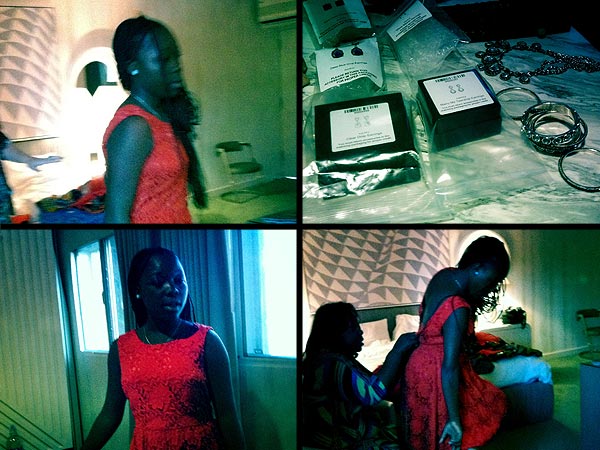LONDON (Reuters) - The yen resumed falling on Monday after Japan signaled it would push ahead with expansionist monetary policies having escaped criticism from the world's 20 biggest economies at the weekend.
Industrial metals also dipped and European shares were soft on lingering worries about the economic outlook, especially for the euro zone. While the risk of an inconclusive outcome in Italy's forthcoming election added to investor concerns.
However, activity was curtailed by the closure of markets in the United States for the Presidents' Day holiday.
The yen, which has dropped 20 percent against the dollar since mid-November, fell further after financial leaders from the G20 promised not to devalue their currencies to boost exports and avoided singling out Japan for any direct criticism.
The dollar rose 0.5 percent to 93.95 yen, near a 33-month peak of 94.47 yen set a week ago. The euro added 0.3 percent to 125.40 yen, to be midway between Friday's two-week low of 122.90 and a 34-month high of 127.71 yen hit earlier this month.
Strategists said the yen was likely to stay weak, though its decline could lose momentum until it becomes clear who will be taking the helm at the Bank of Japan when the current governor steps down on March 19.
"The yen probably will weaken a little further in anticipation of more aggressive easing under a new leadership team at the Bank of Japan," said Julian Jessop, chief global economist at Capital Economics.
Japan's Prime Minister Shinzo Abe is poised to nominate the new governor in the next few days. Sources have told Reuters that former financial bureaucrat Toshiro Muto, considered likely to be less radical than other candidates, was leading the field.
Meanwhile the euro dipped slightly against the dollar when European Central Bank president Mario Draghi said the currency's recent gains made any rise in inflation less likely and added that he had yet to see any improvement in the euro zone economy.
Speaking before the European Parliament, Draghi said the euro's exchange rate was not a policy target but was important for growth and stability, adding that appreciation of the euro "is a risk".
The comments left the euro down 0.2 percent at $1.3334.
Elsewhere in the currency market, sterling hit a seven-month low against the dollar, after a key policymaker made comments about the need for further weakness and recent poor data which has kept alive worries of another British recession.
Sterling fell 0.25 percent to $1.5476 having earlier touched $1.5438, its lowest since July 13.
DATA LOOMS
A big week for data on the outlook for the world's economy weighed on other riskier asset markets following the recent dire fourth-quarter growth numbers for the euro zone and Japan, along with Friday's soft U.S. manufacturing figures.
In European markets, attention is focused on the euro area Purchasing Managers' Indexes for February and German sentiment indices due later in the week which could affect hopes for a recovery this year.
Analysts expect Thursday's euro area flash PMI indices, which offer pointers to economic activity around six months out, to show growth stabilizing across the recession-hit region, leaving intact hopes for a recovery in the second half of 2013.
Concerns over an inconclusive outcome in the Italian election on Sunday and Monday have added to the weaker sentiment as a fragmented parliament could hamper a future government's efforts to reform the struggling economy.
The worries about the outlook for Italy were encouraging investors back into safe-haven German government bonds on Monday, with 10-year Bund yields easing 3.5 basis points to be around 1.63 percent.
"Political uncertainty will keep Bunds well bid this week," ING rate strategist Alessandro Giansanti said, adding that only better than expected economic data could create selling pressure on German debt in the near term.
Italian 10-year yields were 4 basis points higher on the day at 4.41 percent.
EARNINGS HIT
European equity markets were taking their lead from corporate earnings reports which have been reflecting the sluggish economic conditions across the region.
Danish brewer Carlsberg , which generates just over 60 percent of its sales in western Europe, became the latest to report a weaker-than-expected quarterly profit, sending its shares to their lowest level in almost a month.
The 5.8-percent drop for shares in the world's fourth biggest brewery helped send the FTSEurofirst 300 index <.fteu3> of top European shares down 0.2 percent. Germany's DAX <.gdaxi>, France's CAC-40 <.fchi> and Britain's FTSE-100 <.ftse> ranged between 0.4 percent up and 0.15 percent lower.
Earlier, the G20 statement and subsequent comment from Prime Minster Abe indicating a renewed drive to stimulate the Japanese economy lifted the Nikkei stock index <.n225> by 2.1 percent, near to its highest level since September 2008.
MSCI's world equity index <.miwd00000pus> was flat as markets extended a two-week period of consolidation that has followed the big run-up in January, when demand was buoyed by the efforts of central banks to stimulate the world economy.
Data from EPFR Global, a U.S.-based firm that tracks the flows and allocations of funds globally, shows investors pulled $3.62 billion from U.S. stock funds in the latest week, the most in 10 weeks after taking a neutral stance the prior week.
But demand for emerging market equities remained strong, with investors putting $1.81 billion in new cash into stock funds, the fund-tracking firm said.
CHINA RETURN
In the commodity markets, traders played catch-up after a week-long holiday last week in China, the world's second biggest consumer of many raw materials, which had kept activity subdued, with worries about the economic outlook weighing on sentiment.
Copper, for which China is the world's largest consumer, dipped to a near three-week low at $8,125.25 a metric ton (1.1023 tons) on the London futures market. Benchmark tin and nickel also touched three-week lows.
Gold managed to edge away from six-month lows as jewelers in China returned to the physical market after the Lunar New Year holiday but a lack of demand from U.S. markets saw the precious metal slip back to be down 0.1 percent to $1,607.06 an ounce.
Crude oil markets were mostly steady after the weak U.S. industrial production data on Friday [ID:nL1N0BF44A] was seen dampening demand, while tensions in the Middle East lent some support.
"We continue to see a mixed picture out of the United States. Industry output was lower than expected but that shouldn't affect the general upward direction," Olivier Jakob, analyst at Geneva-based Petromatrix, said.
Brent crude was down 20 cents at $117.46 a barrel after posting its first weekly loss since the first half of January. U.S. crude slipped 24 cents to $95.62.
(Additional reporting by Marius Zaharia and Ron Bousso; Editing by Philippa Fletcher and Alastair Macdonald)















